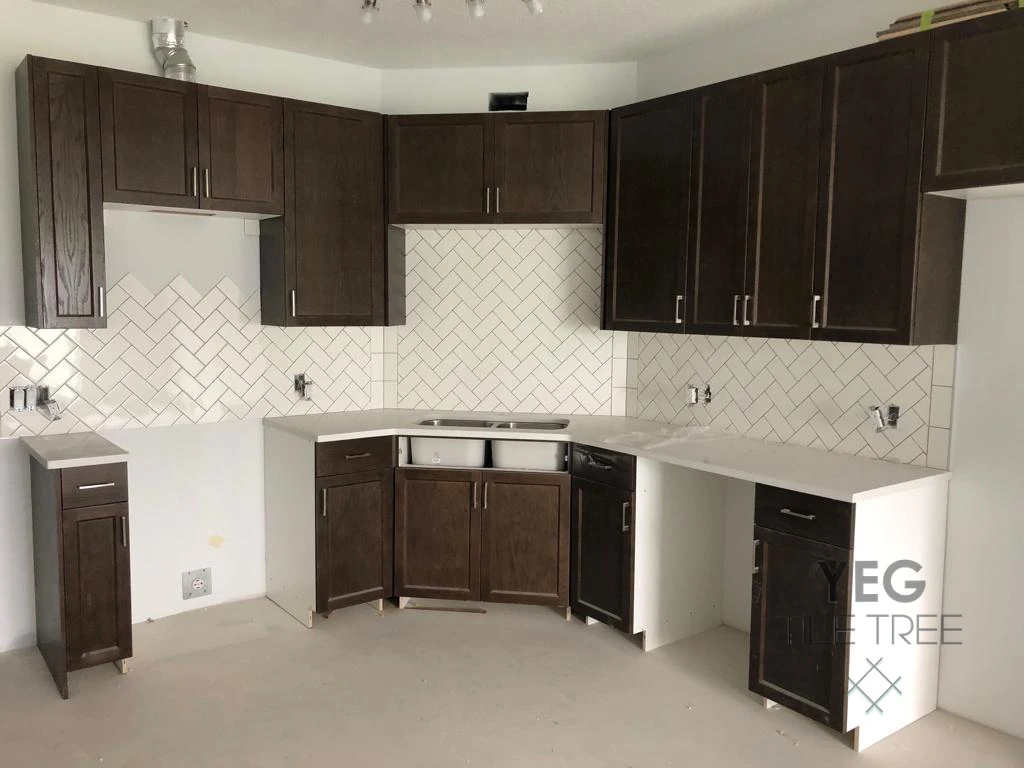
Why tile selection matters in Edmonton’s climate and homes
In Edmonton’s climate, tile selection is an important decision. Edmonton’s cold, dry winters and variable temperature swings can stress flooring materials. Furthermore, proper tile choice affects slipperiness, heat efficiency, and durability. You want to select the right tiles to last every season for years to come.
In this blog, you will learn about the best tile choices for your home. We will discuss where to use them and how climate change can affect your tiles. You will also find information on durability and more.
Understand Tile Basics
Common types of tile include ceramic, porcelain, natural stone, glass, and cement. Ceramic is versatile, affordable, suitable for walls and light-duty floors, and has low water absorption. Porcelain is denser, more durable, and has low porosity, making it good for floors and high-traffic areas.
- Natural stone, such as marble, granite, and limestone, has unique veining and colour, and requires sealing and regular maintenance.
- Glass is reflective, with a modern look. Cutting is challenging for many, so they frequently use it for accents or backsplashes.
- Cement. It possesses a robust, industrial appearance. It stays porous unless sealed. Designers often use it for floors and decorative walls.
Finishes can have different effects on your tile and can create a different look depending on your choice. Matte finishes are subtle, non-glossy, with better slip resistance and are good for floors and walls. Glossy finishes are reflective and vibrant. Nonetheless, they might display smudges and become slick when wet. Textured surfaces enhance grip and provide a pleasant touch. People often use them where slip resistance is important.
Common tile formats include large porcelain, subway, mosaic, rectangular, and hexagonal patterns. No matter your choice, consider the surrounding area. Will this be the focal point in the space? Will it serve a more practical purpose?
Grout options include:
- sanded grout. Better for wider joints.
- People use unsanded grout for narrow joints or delicate surfaces.
- epoxy, which offers chemical resistance and stain resistance. Finally, there are cementitious grouts that require sealing and periodic maintenance.
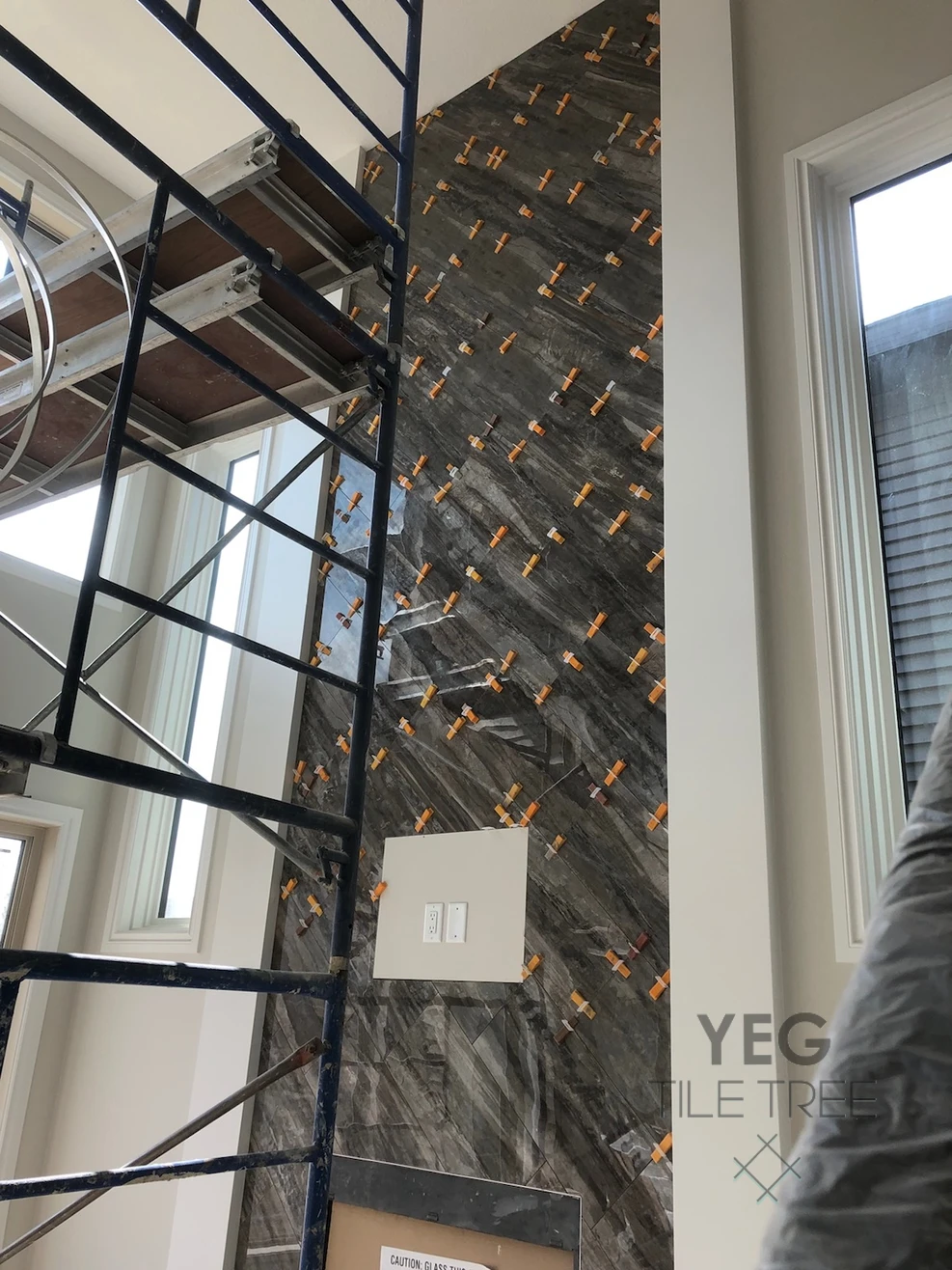
Climate and Location Considerations for Tile Selection in Edmonton
Edmonton’s climate is characterized by long, cold winters with potential freeze-thaw cycles and relatively dry summers. Moisture management and substrate preparation are crucial for any tile project. This is especially true in areas that often have moisture issues.
For areas like basements, bathrooms, kitchens, and entryways, choose tiles and systems that tolerate moisture and temperature fluctuations.
In basements and entryways, think about using porcelain, ceramic, or natural stone tiles. Choose tiles with low water absorption. Ensure there is an effective waterproofing system below.
In bathrooms, kitchens, and other wet areas, choose tiles that absorb little moisture. Make sure to use proper sealing and underlayment. Also, add a continuous waterproof barrier at seams, corners, and transitions. This will aid in stopping water intrusion caused by freeze-thaw cycles.
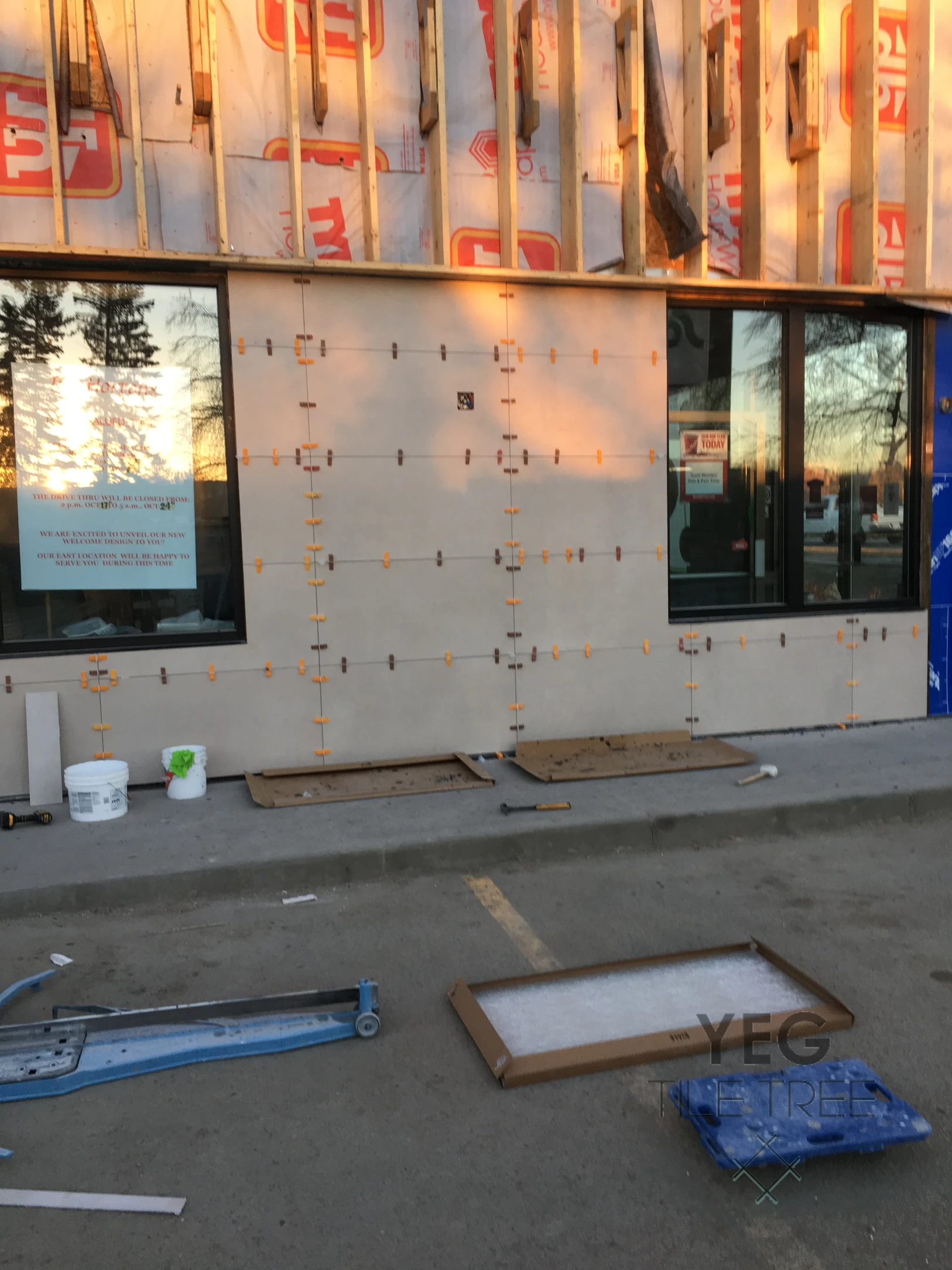
Key Factors to Decide
– Durability and hardness
Durability and hardness show how well a tile can resist scratches, chips, and wear in its installation area. Busy areas, like entryways or kitchens, should use tiles that are harder and have a strong glaze. This helps them stay shiny with daily use.
Also, think about the substrate and how you install the tile. A strong tile can work badly if someone does not install it correctly or if the surface underneath is weak. If you expect a lot of foot traffic, pets, or moving furniture, choose strong and durable tiles.
People often express hardness using the Mohs scale rating or a ceramic manufacturer’s hardness class. A higher rating generally indicates greater resistance to surface damage. For walls or decorative uses with little contact, softer materials can be fine. They may also be easier to cut and shape.
In bustling households, stores, or open spaces, floors require tougher tiles. These tiles resist scratches from heels, dirt, and grit. Additionally, they are easier to clean and maintain in busy spaces.
– Slip resistance
Slip resistance is crucial for safety, especially in bathrooms, kitchens, entryways, and outdoor areas that may get wet. Tiles that resist slipping have textures or finishes that grip well when wet.
Porcelain and ceramic tiles come in textured or matte finishes that provide better grip. In wet areas, use larger tiles with textured surfaces. You can also add anti-slip mats and grout lines to improve traction.
Water absorption and suitability
Porcelain tiles are typically less porous and more water-resistant, making them better for wet areas and outdoor use. Ceramic tiles soak up more water and might need sealing. They work well in areas with low moisture.
Maintenance and cleaning needs
Assess cleaning requirements, stain resistance, and sealing needs. Glazed surfaces are easier to clean. Unglazed or natural stones need more care. They may require sealing to stop stains and moisture.
Aesthetic goals
Consider the tile’s color, design, dimensions, and how it harmonizes with other surfaces. Also, take into account the grout’s hue and the joint width. Also, consider the size of the patterns in relation to the space. Make sure the tile matches the cabinets, countertops, and hardware for a unified look.
Budget, lifecycle cost, and replacement frequency
Compare upfront costs, installation complexity, and long-term maintenance. Consider how long the tile will last, if it needs resealing, and the costs for repairs or replacements. This will help you find the total cost of ownership.
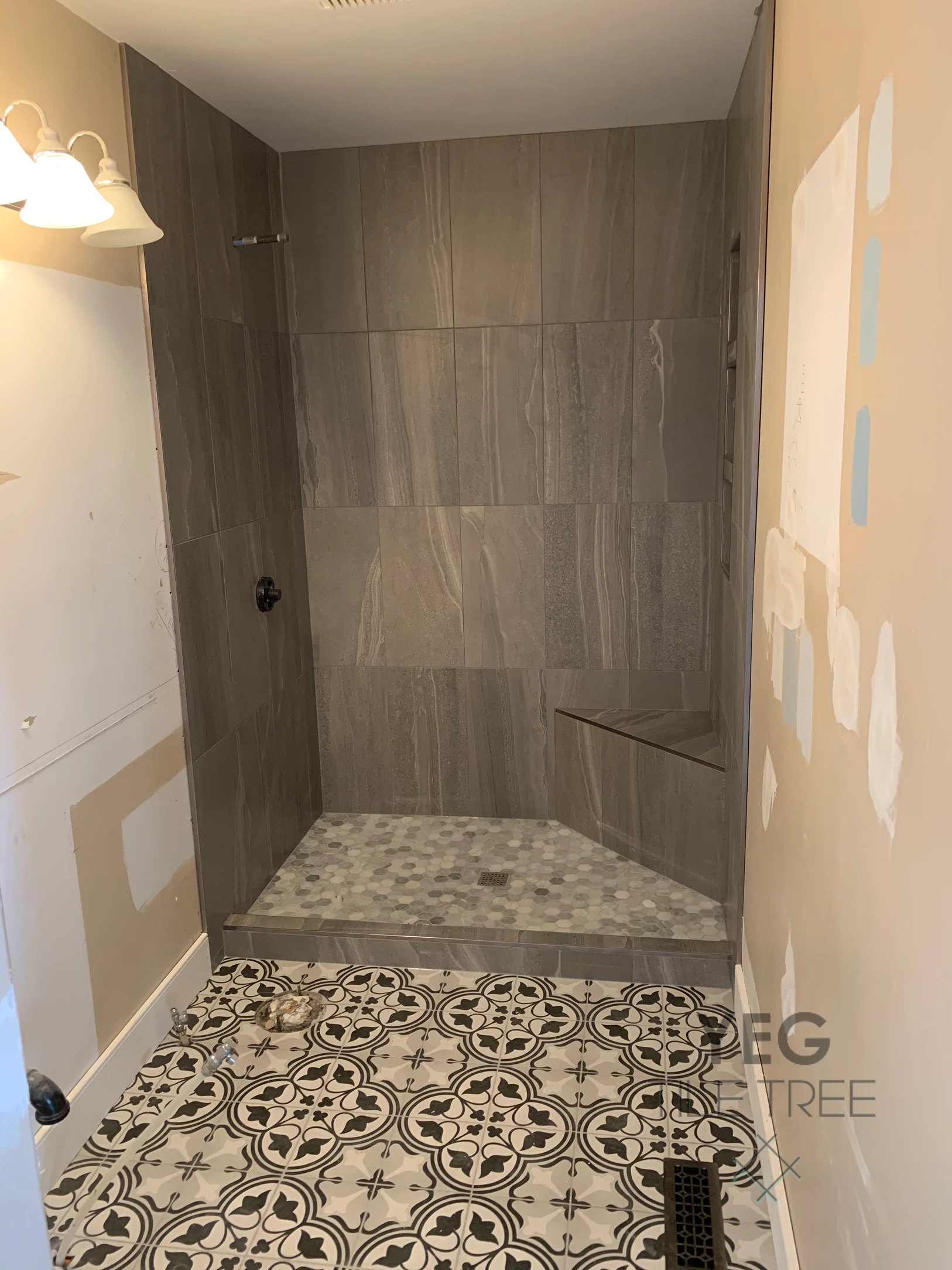

Room-by-Room Guidance
Entryways and Mudrooms
- Tile should be durable enough to handle heavy foot traffic and footwear.
- Use slip-resistant textures to reduce falls, especially when the floor is wet.
- Choose easy-to-maintain surfaces that tolerate dirt, salt, and mud—porcelain or ceramic with stain resistance works well.
Kitchens
- Look for spill resistance and moisture tolerance around sinks and stoves.
- Favour easy-to-clean finishes; smooth, non-porous surfaces are ideal.
- Plan grout care: sealed grout or epoxy grout reduces staining and simplifies maintenance.
Bathrooms
- Select highly water-resistant tiles that are appropriate for withstanding humidity.
- Explore decorative options (patterns, mosaics, textures) for visual appeal.
- Consider anti-microbial or grout options designed to resist mould and mildew; ensure proper ventilation and grout sealing.
Basements
- Emphasize moisture management: choose tiles with low water absorption and good sealants.
- Prepare for subfloor conditions: ensure suitable underlayment and potential vapour barriers.
- Favour durable, non-slip tiles to address potential dampness and changes in temperature.
Living Areas
- Focus on visual impact: colour, pattern, and tile size set the room’s mood.
- Tile size matters: larger tiles can create a spacious feel; smaller tiles add detail.
- Plan grout colour to complement or contrast with tile for the desired effect; darker grouts hide stains, lighter grouts brighten spaces.
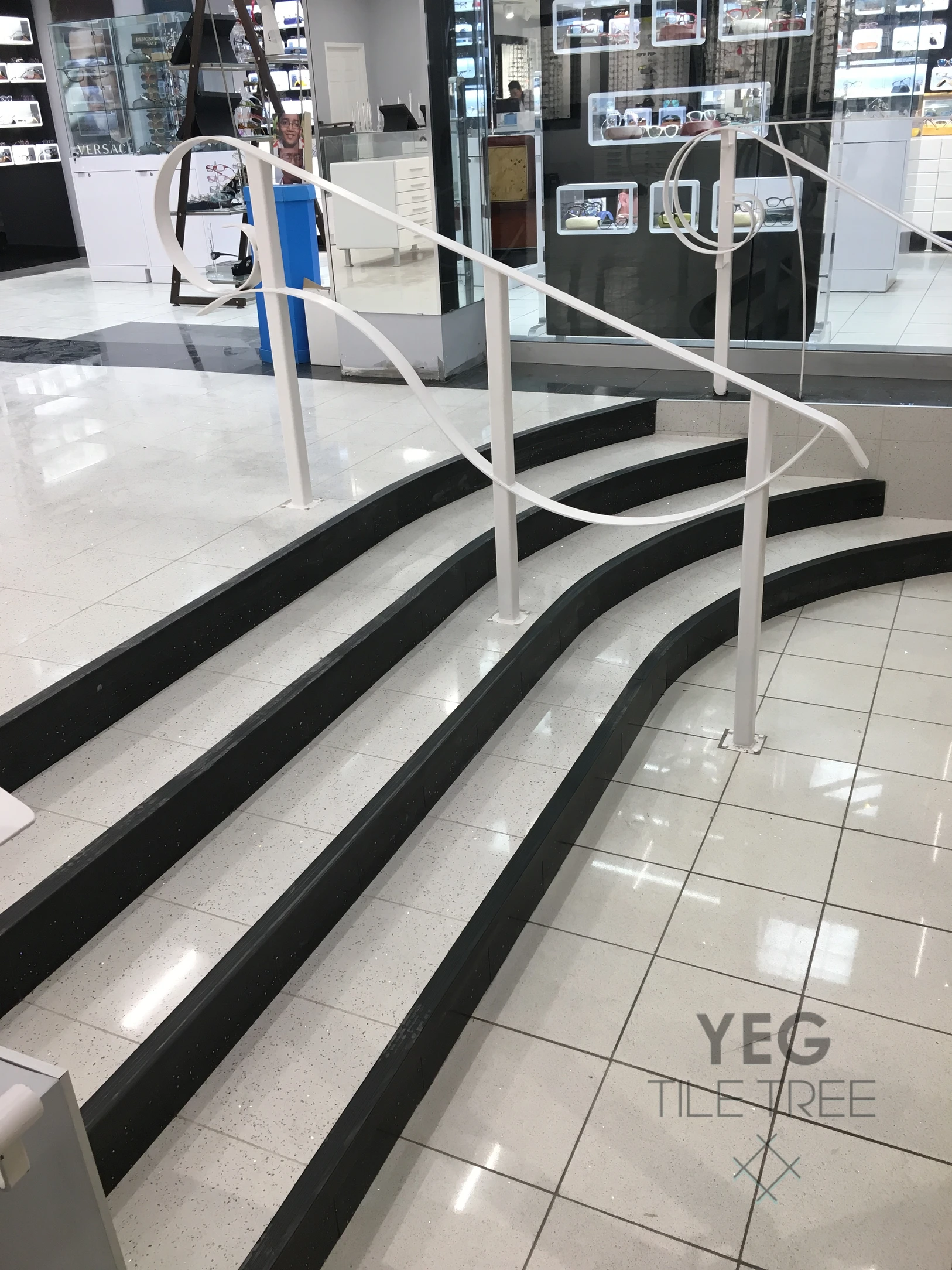
Tile Size, Layout, and installation considerations
Large-format tiles (12×24 in / 24×24 in and larger)
- – Pros: Fewer grout lines create a cleaner, seamless look and they can make small rooms feel larger and more open. In some cases, they may install faster per square foot.
- – Cons: They need a flat, well-prepared surface and do not handle high variations well. They are harder to cut and fit in irregular spaces. They are heavier and may need larger cutting tools.
Small tiles (2×2 in, 3×6 in, etc.)
- – Pros: It works well on uneven subfloors and is good for complex layouts or walls. Controlling, aligning, and bending around irregular edges is easier. Grout lines can provide traction and slip resistance in wet areas.
- – Cons: More grout lines mean more maintenance and potential staining; longer installation time and more waste because of cuts.
Layout considerations
- – Plan the starting point to minimize cuts in visible areas, and align with doors and natural sightlines.
- – Use a layout plan or grid to guide placement and reduce waste.

Sample Tile Buying Checklist
Use this checklist to evaluate tiles before purchase. Ensure you consider all key factors to avoid issues later.
- Size: Determine tile dimensions (e.g., 12×12, 24×24, large-format). Consider the room layout, size, and how to align the tiles.
- Type: Choose ceramic, porcelain, natural stone, glass, or cement based on location, load, and maintenance.
- Rating: Check wear rating or PEI/ Mohs hardness appropriate for foot traffic and surface use (floor vs. wall).
- Finish: Choose between matte, gloss, or satin finishes. Consider slip resistance and maintenance implications.
- Colour: Ensure colour consistency across batches; verify undertones under natural and artificial light.
- Pattern: Plan whether to use solid, staggered, or running bond patterns; account for grout lines and visual impact.
- Grout: Select grout colour (sand/moulded). Decide cementitious vs. epoxy, and consider stain resistance and maintenance needs.
- Underlayment: Confirm suitable underlayment material, thickness, and compatibility with tile and subfloor.
- Seams: Plan grout width, waterproofing, and expansion joints; verify substrate flatness and tolerance.
- Warranty: Review manufacturer’s warranty, coverage (defects, fading, cracking), and requirements for installation.
- Maintenance Plan: Outline cleaning regimen, sealer needs (type and interval), and long-term care to preserve appearance.
Quick tips:
- Order extra tiles for future repairs and matching batches.
- Verify installation recommendations from the tile and underlayment manufacturers.
- Consult with a professional installer for substrate and layout guidance.

Maintenance and Longevity
Maintenance and longevity are built through mindful care of your tile surfaces. Cleaning routines should match the type of tile.
- – Porcelain: use a pH-neutral cleaner and avoid rough brushes.
- – Natural stone: use a stone-specific cleaner; dry tiles quickly after washing to prevent water spots.
- – Ceramic: mild detergent and regular mopping work well.
- – Always wipe spills promptly; avoid harsh acidic or alkaline cleaners that can wear grout or finishes.
- – Regular dusting or sweeping helps prevent scratches and keeps luster.
- – Sealing: often not needed for unsealed porcelain/most ceramic tiles, but sealing grout helps reduce stains.
- – Natural stone and some installations may require sealing to prevent moisture and stains.
- – Sealers can be penetrating or topical; choose based on the stone type and porosity.
For damaged tiles, replace each tile if you can. If the grout shows significant damage or the surface warps, consider hiring a professional to check it. In renovations or major repairs, ensure proper substrate integrity and moisture barriers to enhance longevity in Edmonton’s climate.
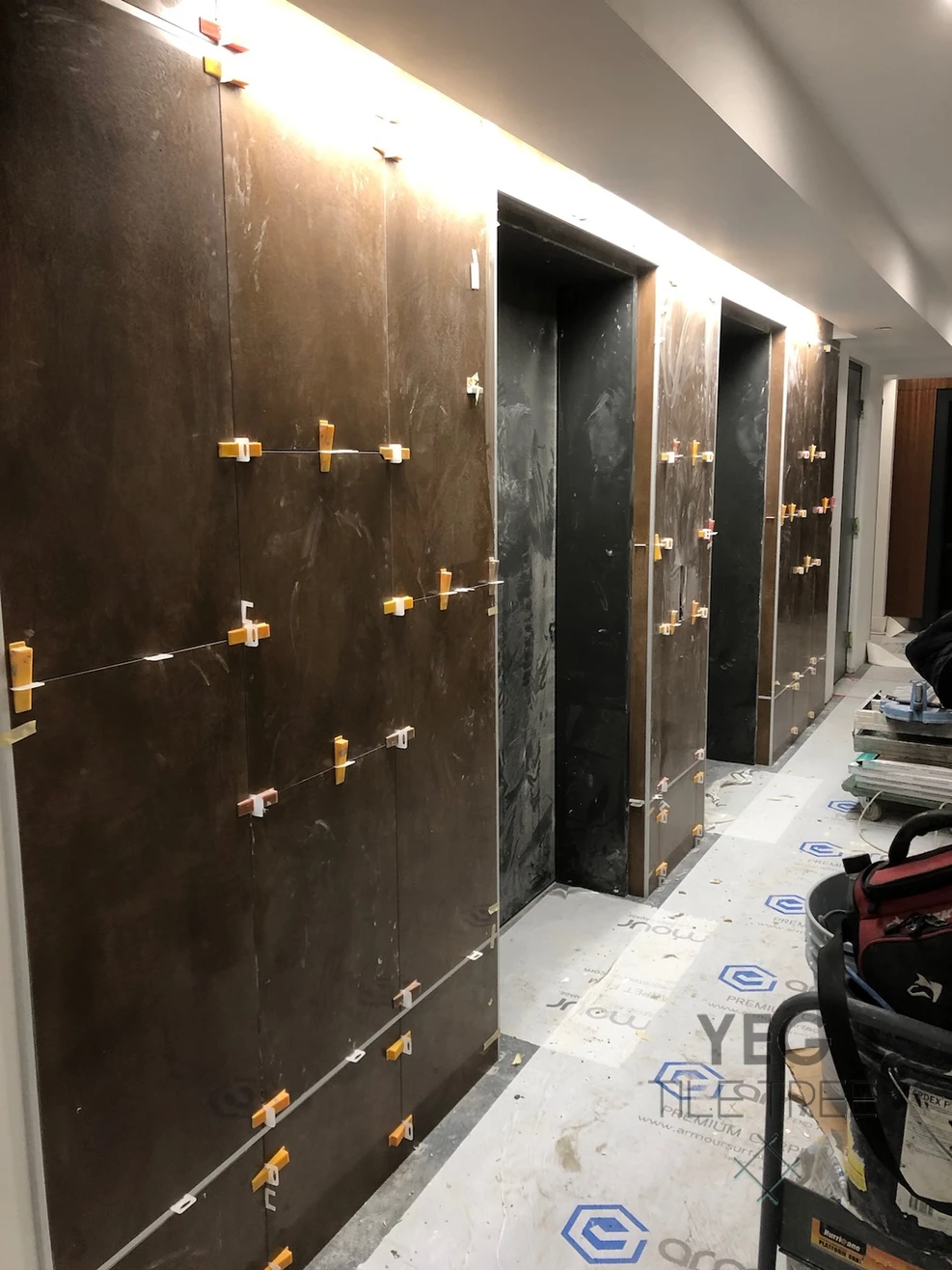
Budgeting Guide
A budgeting guide for tile begins with understanding the ballpark costs you can expect. Plan for the basics: materials, labour, underlayment, and waterproofing.
These are the main parts that affect the total cost. Materials vary by tile type, size, and finish, while labour covers installation time and expertise. You should factor in the costs of underlayment and waterproofing early for durability and longevity.
Be mindful of concealed expenses that may arise throughout a project. Removal of old tile, levelling uneven subfloors or walls, and waste disposal can add significantly to the budget. These elements are often easy to underestimate but critical to getting a smooth, long-lasting result.
To save money without losing quality, try these strategies.
- Choose standard tile sizes to cut less.
- Batch installation to reduce waste.
- Pick mid-range materials that are durable and look good.
- Shop for wholesale or bulk materials where appropriate
- Get multiple quotes from reputable installers to ensure you’re balancing cost with workmanship.
Quick tip:
- Always get a written estimate with per-sf line items and a clear scope to avoid unexpected charges.

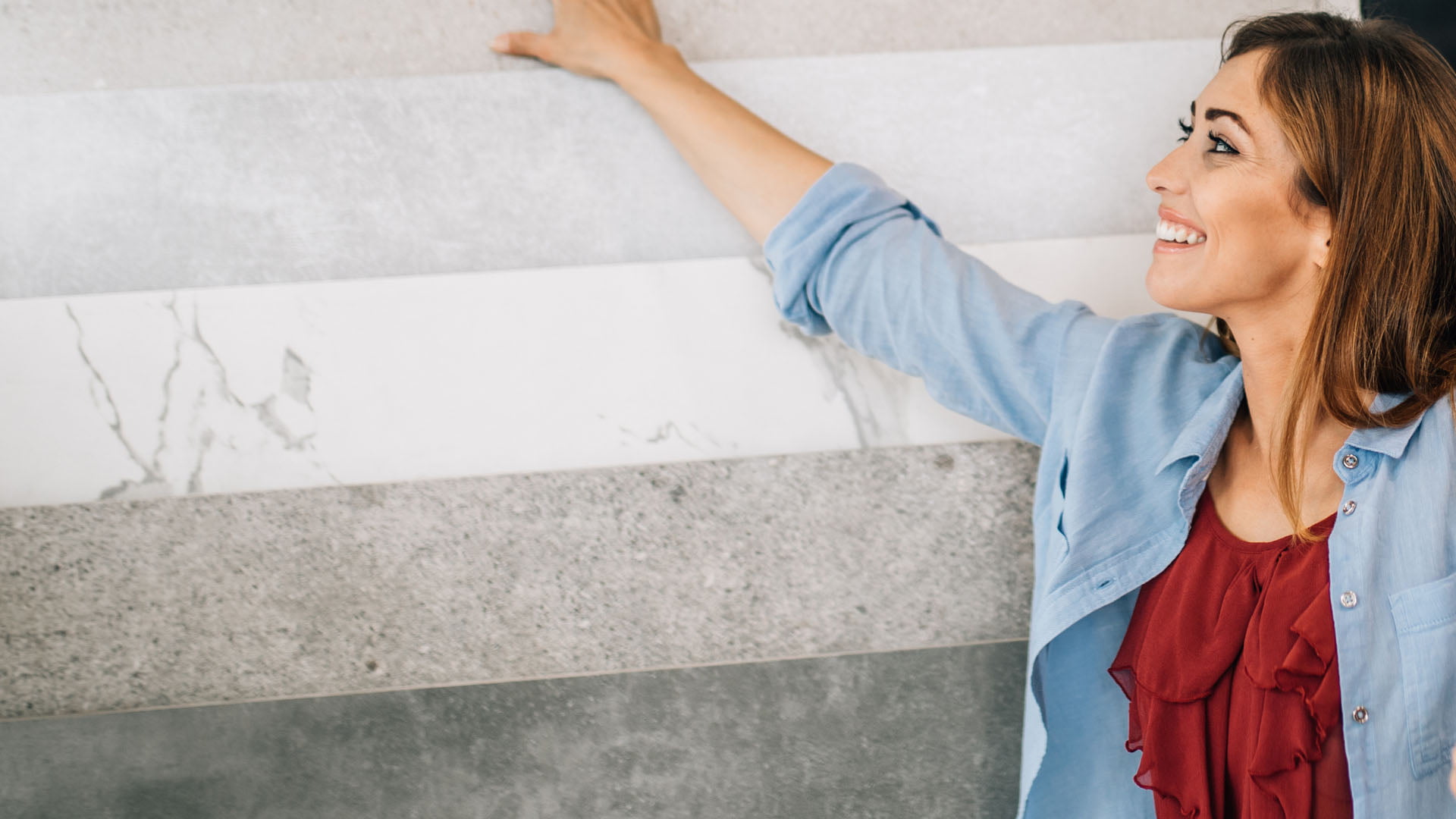
Questions to Ask Your Tile Installer
Hiring a tile installer like YEG Tile Tree is a significant financial commitment. Use these questions to verify qualifications, ensure quality, and avoid surprises on project milestones.
1) Certifications, Warranties, Product Availability, and Timeline
- – Do you hold any current certifications (e.g., tile installation certifications, underlayment or waterproofing certifications)?
- – What warranty do you provide on labour, and what does it cover (length, limitations, exclusions)?
- – Are the materials and grout you plan to use readily available, and do you offer on-site material ordering?
- – Can you provide a project timeline with estimated start and completion dates, including lead times for specialty products?
- – How do you handle changes or delays, and how will that affect the timeline and cost?
2) Substrate Testing, Movement Joints, and Waterproofing Details
- – Do you assess the substrate before installation (e.g., flatness, moisture content, backer board integrity)? In that case, which tests do you conduct?
- – How do you determine where movement joints are required in walls, floors, and transitions?
- What waterproofing methods will you use? Will you apply surface membranes or place membranes behind tiles?
- – How will movement joints be integrated with other elements (shower niches, tub decks, transitions to other flooring, door thresholds)?
- – Do you perform moisture mitigation or substrate prep (e.g., crack isolation, anti-fracture membranes) on this project?
3) Additional Important Questions
- – Can you provide references or photos from similar completed projects?
- – What is your clean-up process during and after installation?
- – How do you handle unused or leftover materials and waste?
- – Do you require a permit or building inspection for this project, and will you handle it?
- – What are your payment terms, and how do change orders get documented?
Quick tip:
- Get it in writing. Ask for a detailed written scope, line-item budget, and a warranty document before work begins.


Conclusion
When choosing the right tile for a home in Edmonton, you need to make some key decisions. First, decide between porcelain and ceramic tiles. Next, check the slip resistance of the tiles. Also, think about how well the tiles hold heat and how durable they are in Edmonton’s cold weather.
Finally, consider where to install the tiles based on your needs. By focusing on these factors, you’ll ensure long-lasting performance and safer, more comfortable spaces year-round.
Set up a meeting with YEG Tile Tree. Ask for sample tiles. Contact the local Edmonton supplier to check fits, finishes, and prices. This hands-on approach will help translate the guide into a tailored, practical tile plan for your home.
